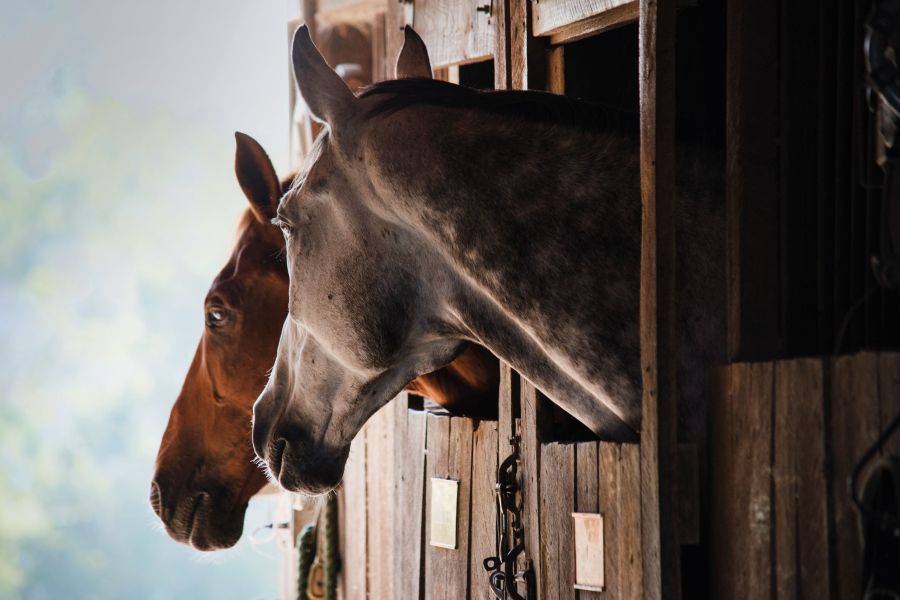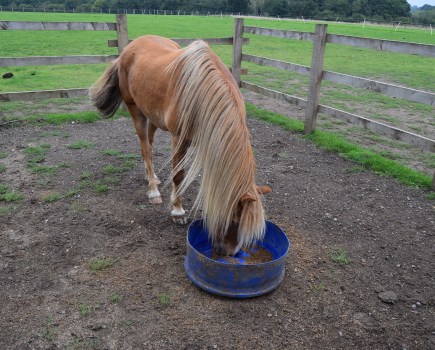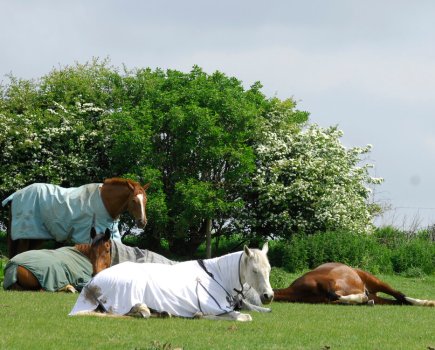How to feed a horse on box rest is an important consideration when nourishing a horse who is confined to their stable. The decision to put a horse on box rest usually comes with little advance notice — perhaps they are injured or unwell — and so it’s a good idea to have a pre-plan in your mind about the changes you’ll have to make in order to keep your horse healthy.
Restricted turnout, whether due to yard rules, injury, or bad weather, isn’t quite as restricting as box rest but it still involves them moving less, thus increasing the risk of digestive issues such as colic and gastric ulcers in your horse. The obvious way to lower the risk is to increase your horse’s turnout, but when this isn’t an option, the following advice can help to encourage digestive health.
1 Reduce your horse’s energy intake
As a horse on box rest is considerably much less active they will also use far less energy and so require less of this in their hard feed. Decreasing the horse’s intake of simple carbohydrates in the form of sugar and cereals is important. This will reduce their overall daily calorie intake, encourage your horse to be quieter in the stable (bear in mind that box rest can be a stressful experience for horses, and it is unnatural for them all) and avoid undesired weight gain.
2 Keep their gut moving
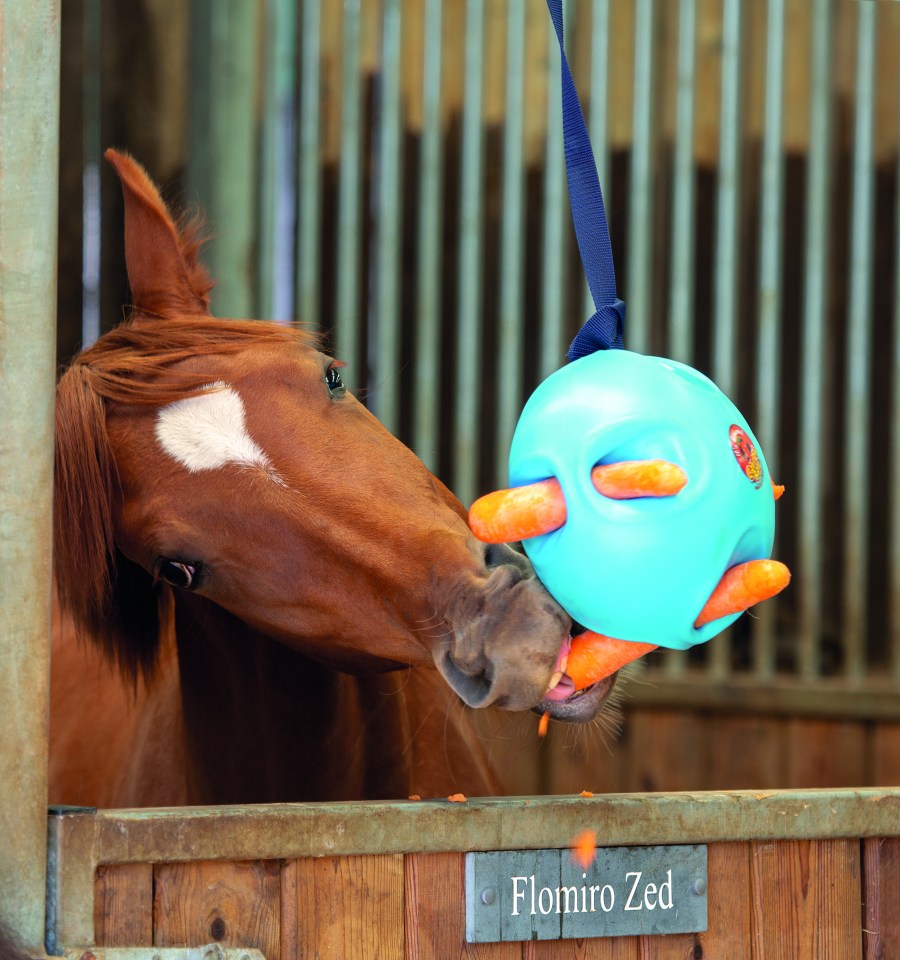
A carrot ball helps keep a stabled horse entertained
Another challenge presented by box rest and restricted turnout is the lack of movement. Moving around naturally encourages bowel movements, whereas standing still for prolonged periods of time can increase the risk of problems such as colic due to gas build-up or digestive impactions. To combat this, feeding plenty of fibre can help to offset the risk by promoting the normal healthy passage of food through the horse’s digestive system. Many vets also recommend adding a probiotic to the horse’s diet to help support the normal (healthy) bacteria in the gut and digestion.
3 Continue to feed forage
Forage is the staple of every horse’s diet and this remain true for horses that are on box rest or restricted turnout. Not only is forage vital for digestive health, but eating it also keeps your horse occupied. Fibre is digested by micro-organisms in the hindgut that produce heat as they break fibre down, meaning forage also helps to keep your horse warm and snug.
Grass is both easier to digest and has a much higher water content than hay or haylage, so taking a horse off grass suddenly and replacing this with hay or haylage means you increase the amount of indigestible fibre in their diet. This can be a problem for horses who are less efficient at digesting (poor doers) as they may struggle to get as much nutrition from hay compared to grass.
Feeding haylage, which is usually harvested earlier than hay and thought to be more digestible, can help, as can adding in chopped fibre feeds which are based on grass. Supplying the horse with freshly picked grass each day can help to ease the transition from grazing to box rest.
4 Monitor the horse’s hydration levels
To make up for the lost water intake while not being turned out in the field, wetting hay and providing plenty of fresh water is very important to help prevent further problems for your horse, such as impaction colic. There are different ways to approach wetting hay. To simply add moisture you can use a hose to wet the hay for a few minutes, which is ideal for poor doers. Alternatively, soaking hay for several hours can reduce the carbohydrate content (as you would with an horse or pony prone to laminitis), which means you can trickle feed a large quantity, which is better for feeding a good doer.
As grass has such a high water content and your horse is missing out on that hydration, it’s important to do other things to ensure your horse is taking in enough water — dehydration is as big a risk in winter as it is in summer. Horses have been shown to prefer warmed water when the weather is cold, so you could add warm water to their bucket to take the chill off. Feeding a soaked feed, and simply adding water to your horse’s normal bucket feed, is another great way to hydrate your horse.
5 Feed a horse on box rest at regular intervals
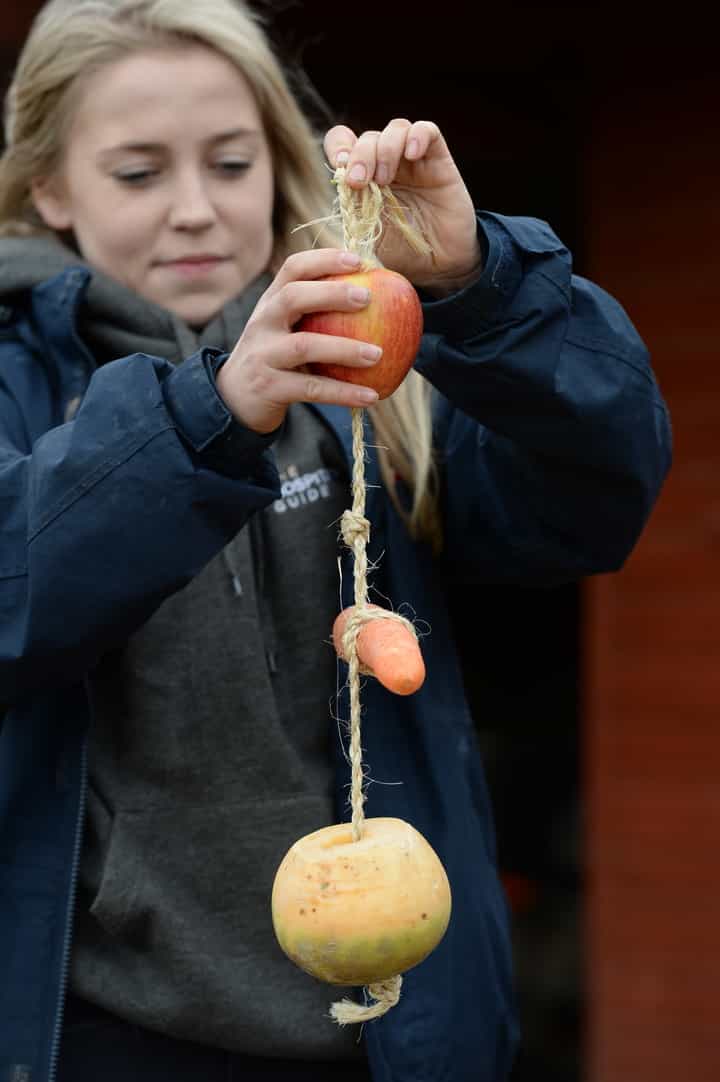
Hang a vegetable kebab for your horse to eat
Having considered what to feed your horse, it’s also important to consider when to feed them. Horses have evolved as trickle feeders, so maintaining a slow and gradual intake of food all day and night is important to keep their digestive health in top nick. Prolonged periods without food can lead to problems such as gastric ulcers or colic.
Ideally, horses should never go more than a couple of hours without food, so you’ll need to consider how you can spread their foraging time over the day and night. Try splitting their daily ration of hay or haylage over six to eight feeds. Smaller bucket feeds more often is a good idea too. By cafeteria feeding your horse it can help to slow down their eating and make forage last longer, as keeping them busy in their stable and preventing boredom.
6 Prevent a stabled horse becoming bored
It’s no surprise that box rest can lead to boredom and stress, anxiety and general unhappiness in horses — not a good recipe for recovering from injury. While you don’t want your horse to be buzzing around their stable, as this could lead to re-injury or slow the healing process, you do want them to be entertained. Treat balls with low calorie treats, or other forms of stable enrichment such as toys and licks, can help.
You can also encourage natural browsing behaviour by providing more than one type of forage, making sure that you introduce this gradually. This is cafeteria feeding, as mentioned in point 5. As well as feeding traditional hay or haylage, for example, you could provide your horse with compressed fibre blocks, short-chopped and pelleted alfalfa, straw and grass, and soaked-fibre feeds.
Root vegetables, such as swedes and carrots, also go down well and provide a healthier alternative to some sugary lick treats.

